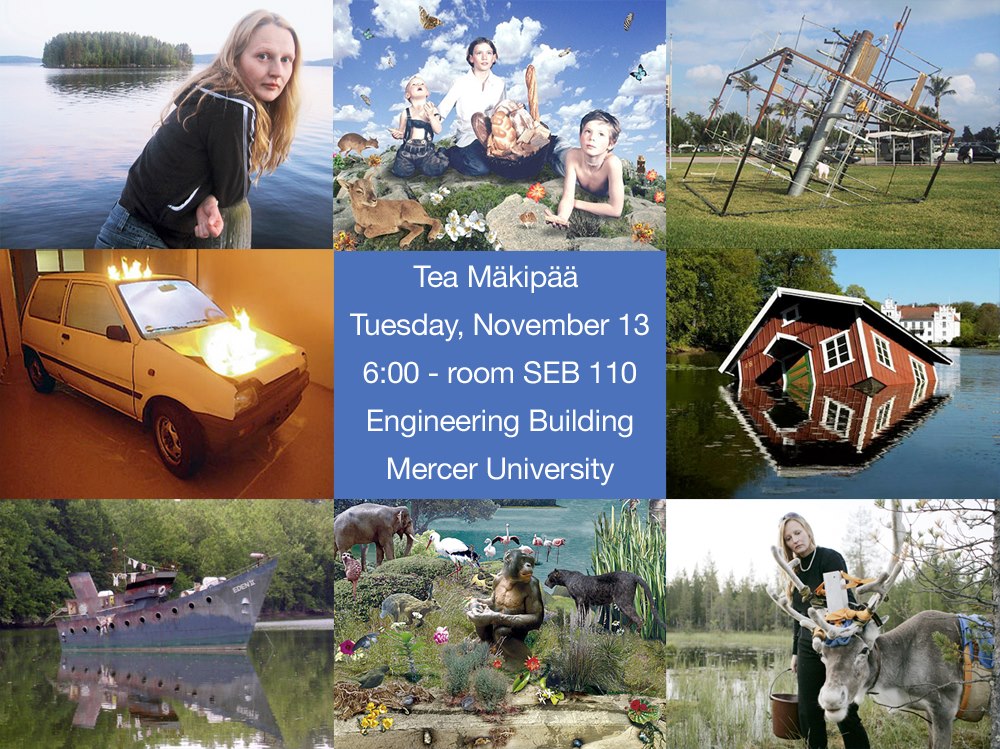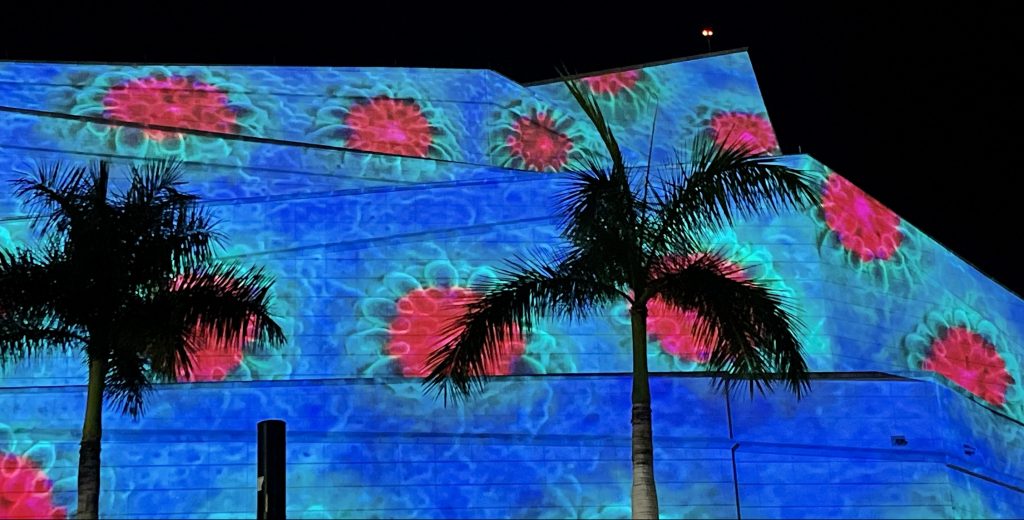
Finnish artist Tea Mäkipää lectures about her work at Mercer University
Tea Mäkipää is an artist who makes work for the public space. These pieces are usually large installations, but not always. She uses whatever materials best suit her goals with a specific project. Yesterday, those tools were a projector and a podium, and her project was a lecture on her body of work at Mercer University in Macon, Ga.
Mäkipää’s experience as an artist working in the public space makes the timing of her visit all the more relevant amidst the growing discourse about public art in Macon. I’ve written about that before, so I won’t get into it here. I didn’t take a head count at the lecture, but I hope other members of the newly formed public art committee were in attendance. Understanding the potential for complexity and social relevancy in any public art undertaking is a necessary component for addressing the task ahead.
Speaking specifically to Mäkipää’s lecture, I found her to be warm and humorous. English is not her native language, but she conveyed her thoughts well. Her explanations of her work’s conceptual underpinnings added to my understanding of what she is trying to accomplish as an artist. That is to say, I understand she is hopes to convince us to get our act together. She approaches humanity as simply another species of animal. One which needs to assess its actions before it destroys the environment for all species.
The first piece she discussed was “Eden II,” an installation in which she examines population growth and its consequences in terms of natural resource and food consumption. The work is located in the middle of a lake at the Indianapolis Museum of Art’s 100 Acres: The Virginia B. Fairbanks Art & Nature Park. It features a ship on the lake and an abandoned guard house on the shore nearby. The vessel appears to be filled with human passengers, and from the guard house, visitors can watch humans on the ship on surveillance monitors. The passengers are refugees. Victims of climate change, they are searching for a new land to consume. Or as Mäkipää put it, “a new Eden.”
In a second water-based installation, “Atlantis,” Mäkipää uses similar concepts, but instead of a ship, she partially submerges a small house in water. According to her website, “Seen from the shore, a corner of a house beacons up from the water. In the parts that are visible, life seems to be continuing. From the ocean depths we hear the quiet sound of singing and arguing. Warm house lights shine forth from the dark waves. Atlantis is a dream-like vision, a reminder of the vulnerability of our modern lifestyle. This accident could have occurred due to various reasons. Some of these are a product of the human settlement itself. Some individual inhabitants of the Atlantis block have refused to leave their homes and are continuing their daily life, ignoring the surrounding water.”
In her work, Mäkipää examines the consequences of humanity’s refusal to adapt to its environment. Instead, she explained, humanity adapts its environment to itself. Her installations combine sculptural work with audio and video. In other works she uses text and language. In every work, she seeks to create an experience which allows to viewer to see humanity as an outside observer would. She seeks to equalize other species with our own. In the process, she hopes we will realize that we are just one of many animals who inhabit the Earth, and that to consume all its natural resources is not our right and will certainly be our downfall.
Recent Content
-
Artsarticle ·
-
Artsarticle ·
-
Artsarticle ·
